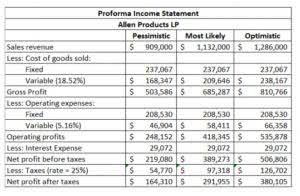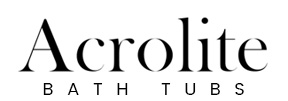
Regardless of the ease of changing your entity structure, careful analysis should be completed prior to any change to mitigate any unintended consequences. Wineries sometimes offer a discount of a certain amount for each case that their distributors sell through to retailers. This is a depletion of a https://www.facebook.com/BooksTimeInc distributor’s inventory, which is where the name comes from. However, we’ve only touched the tip of the iceberg when it comes to keeping healthy books for your wine business.
- This method is often used in more basic costing models and for smaller wineries; however, it can still be used in more complex costing models of larger wineries.
- Now, let’s explore a concept that can significantly improve your financial insights — managing production accounts.
- In this article we provide an overview of how to calculate the cost of goods sold (COGS) and why it matters.
- The bulk wine cost with additional storage and overhead is combined with the cost of packaging materials used along with bottling labor to derive the individual unit cost of the finished wine.
- In any case, the winery needs to track when, what kind of, and to whom wine was sold, and to pay excise taxes to the appropriate taxing authority.
- By carefully managing these loans and ensuring they are repaid during peak sales times, wineries can maintain a steady cash flow without incurring excessive debt.
combined years of experience serving wineries

A common method of allocating shared facility costs to functional departments is to capture such expenses in a cost center and allocate them based on the amount of space occupied by each department. In order to know your cost of goods sold (COGS) in a period you must first know what it cost you to produce those wines—this is referred to as the Online Accounting Cost of Goods Produced (COGP). IC-DISCs do not have employees or offices and are not taxed at the federal level; instead, they charge a sales commission from the exporting winery. This revenue is then distributed to the shareholders, who tend to be the same individuals or entities that own the exporter, as qualified dividends. Currently, qualified dividends are taxed at a lower rate than ordinary income, so the resulting tax bill can be significantly lower than if the export income was taxed at ordinary income rates (Ricioli). Our slogan “Balancing your life sheet” reflects how FIDA will be serving you, Fida strategy aims to provide a whole package of financial services; it is a full line service to get you the peace of mind all the time.
The Strategic Role of Financial Modeling in Scaling a CPG Brand
Certain rules also allow taxpayers to use simplified methods to account for inventory from a tax perspective. We help marijuana growers, dispensaries, CBD retailers, and many others conquer the challenges of this unique industry with customized accounting services and money-saving tax strategies. We understand the complex government rules regulating your industry and offer the support you need to keep your books up to date and in compliance. We also know how to leverage the tax code to legally and ethically reduce tax exposure so more of your revenues become profits. The key to accurate billback accounting lies in deducting them directly from your gross sales before calculating COGS. Accounting for the potential cost of having to repay billbacks provides an accurate view of your winery’s income and overall financial health.
What is accrual accounting and why is it important for wineries?
- We can help up build a tax strategy customized to the specifics of your business needs with R&D Tax Credits, Disaster Relief Tax Credits, Tangible Asset Incentive Services, and more.
- Moss Adams LLP and its affiliates assume no obligation to provide notification of changes in tax laws or other factors that could affect the information provided.
- The up-front investment is pretty incredible, which is why mostly rich folks own vineyards.
- The key is to start with a sound framework, only create the accounts you need, and then build out from there.
- And if you’re trying to close the books, this means that the amount of the depletion allowance has to be accrued, and it’s pretty much a guess.
The specific identification may be more preferable for wine production wherein winery accounting you need to track a variety of production costs over the course of more than one reporting cycle. Each expense — grapes, bottles, and salaries — gets tucked into a “other expense” account. Once you’ve produced the wine and it’s ready for sale, recalculate the cost of making it and move those costs into the inventory accounts.

For vineyard businesses that capitalize their pre-productive farming costs, bonus depreciation is allowed on eligible farming assets. The availability of bonus depreciation for a winery is pretty widespread, but depending on how a taxpayer accounts for pre-productive costs, bonus depreciation may not be available for vineyard assets. And if you think that’s enough cost accounting for one day, no – not even close. The wineries prefer to use last in, first out costing to value their ending inventory, since it matches their latest costs against revenue, which should lower their taxable income.
- Most wineries will have products that need to age for varying amounts of time.
- Regardless of the ease of changing your entity structure, careful analysis should be completed prior to any change to mitigate any unintended consequences.
- Direct costs are those that can be directly attributed to the production of grapes, such as labor, fertilizers, and water.
- Head to the bottom of the article to download your free winery chart of accounts template.
- By matching recent, higher costs against current revenues, LIFO can reduce taxable income, offering a tax deferral advantage.
